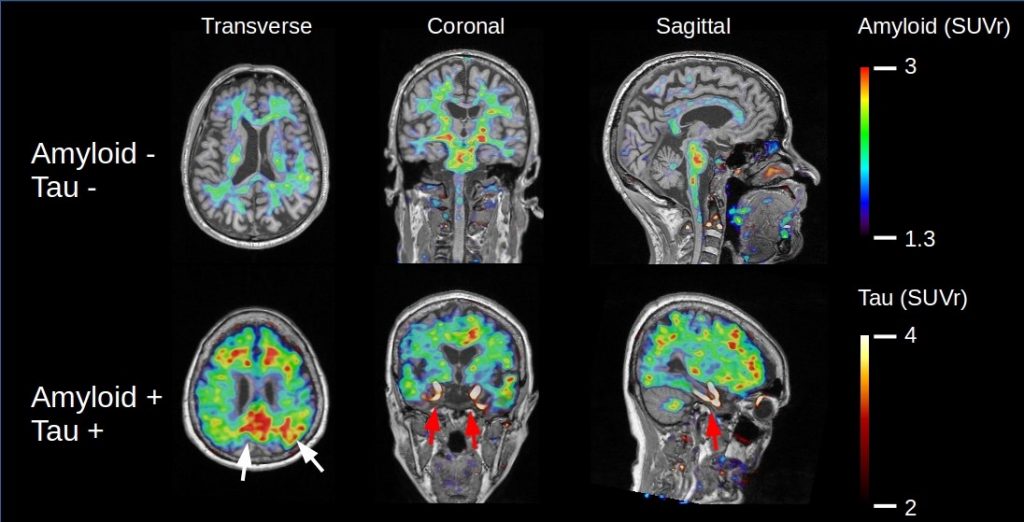Updates
Tau imaging with [18F]MK-6240
The Clinical Imaging Research Centre (CIRC), with funding from the NUHS Centre Grant, has developed new radiotracers for use in Positron Emission Tomography (PET) imaging in the brain; they are now available for use by investigators.
Tau imaging with [18F]MK-6240
[18F]MK-6240 is currently the leading, early stage Positron Emission Tomography (PET) imaging agent for assessing the level and progression of neurofibrillary tangles (NFTs) in the brain. NFTs made up of aggregated tau protein are a hallmark of several neurodegenerative diseases, including Alzheimer’s disease. The Clinical Imaging Research Centre (CIRC) at the National University of Singapore’s Yong Loo Lin School of Medicine (NUS Medicine) collaborates exclusively with Cerveau to manufacture and supply the [18F]MK-6240 needed for initiatives in Singapore.
Press Release
Amyloid Imaging
The Clinical Imaging Research Centre (CIRC), with funding from the NUHS Centre Grant, has developed new radiotracers for use in Positron Emission Tomography (PET) imaging in the brain; they are now available for use by investigators.
Amyloid Imaging
Assessment of beta-amyloid plaque pathology can be visualised using [11C]PiB Positron Emission Tomography (PET). [11C]PiB binds to beta-amyloid deposits in the brain and may enable earlier identification of AD and improve monitoring of disease progression and interpretation of brain scan images. CIRC is working with Cerveau Technologies and Meilleur Technologies, and have now signed an agreement with Meilleur to be the manufacturer of [18F]NAV4694, the next generation PET biomarker, for amyloid plaque imaging in Singapore.

Amyloid and Tau images overlayed on the subject’s structural MRI. TOP: Healthy control, the subject is amyloid negative with an amyloid scan only revealing non-specific binding of [11C]PiB to the white matter, and Tau negative with no specific binding of [18F]MK6240. BOTTOM: the subject is both amyloid positive with high cortical amyloid accumulation (white arrows) and Tau positive with high specific uptakes in the Hippocampus and Entorhinal cortex (red arrows). Images from an Amyloid PET scan of an Alzheimer’s disease patient – study done in collaboration with A/Prof Christopher Chen Li Hsian.
TSPO Imaging with [18F]FEPPA
The Clinical Imaging Research Centre (CIRC), with funding from the NUHS Centre Grant, has developed new radiotracers for use in Positron Emission Tomography (PET) imaging in the brain; they are now available for use by investigators.
TSPO Imaging with [18F]FEPPA
The translocator protein 18kDa (TSPO) is involved in a variety of cellular functions, including cholesterol transport, mitochondrial respiration, apoptosis, cell proliferation and differentiation, and oxidative stress, depending on the tissue (Batarseh & Papadopoulos, 2010).
[18F]FEPPA is a second generation PET radioligand for the PET imaging of TSPO and supported by the NUHS Centre Grant is currently in the final stages of manufacturing validation and will be available in Singapore over the next couple of weeks for use by investigators across a wide variety of different disease areas including:
- Neuroinflammation associated with ageing, epilepsy and neurodegeneration/dementia
- Imaging of inflammatory response to infectious diseases e.g. tuberculosis
- Mitochondrial dysfunction is a hallmark of common metabolic diseases, such as obesity and diabetes mellitus
- Cardiac imaging
- Oncology imaging
References
Batarseh A, Papadopoulos V. Regulation of translocator protein 18 kDa (TSPO) expression in health and disease states. Mol Cell Endocrinol. 2010; 327: 1-12. doi: 10.1016/j.mce.2010.06.013.
